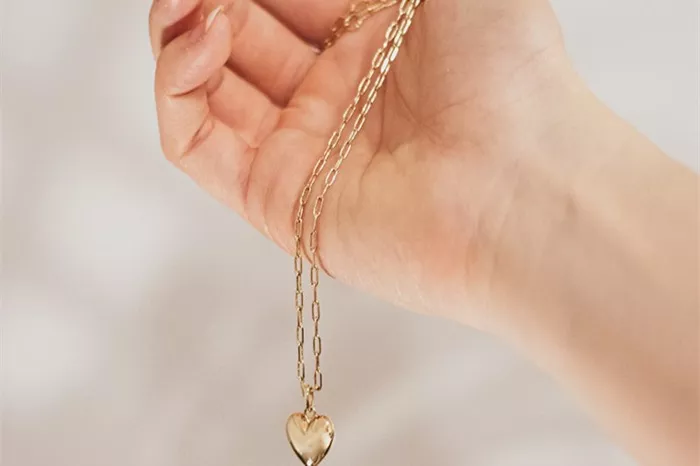Diamonds are the hardest natural material on Earth. They rank 10 on the Mohs scale of mineral hardness. This means they are highly resistant to scratches. However, hardness does not mean indestructibility. Even diamonds can chip or fracture with strong enough impact or pressure.
Impact of Settings on Durability
Most jewelry pieces, including pendants, are secured in metal settings such as gold, platinum, or silver. These settings are often softer than the diamond itself. Over time, water and chemicals can wear down these metals, making the stone more vulnerable to damage or loss.
Showering With Jewelry: General Concerns
Soap Residue and Film
Showering with a diamond pendant can cause soap and shampoo residue to accumulate on the stone and metal. This dulls the sparkle of the diamond and affects its brilliance. Regular exposure to body washes and conditioners may also contribute to the buildup.
Water and Minerals
Tap water often contains minerals such as calcium and magnesium. These minerals can leave deposits on both the diamond and the setting. Over time, these deposits may be difficult to clean and can interfere with the appearance of your pendant.
Risks to Metal Settings During Showers
Gold Settings
Gold is a popular choice for diamond pendants, but it is relatively soft. Water exposure does not damage gold immediately, but frequent exposure can weaken prongs, loosen the stone, and affect soldered joints.
Silver Settings
Silver tarnishes easily. Humidity and exposure to soaps and shampoos in the shower accelerate tarnishing. A silver setting may require more frequent cleaning and maintenance if worn in the shower regularly.
Platinum Settings
Platinum is highly durable and corrosion-resistant. However, no metal is immune to the effects of daily water and chemical exposure. Continuous contact with water can cause buildup and minor abrasions.
Effects on Diamond Appearance
Loss of Brilliance
Diamonds shine due to their ability to reflect and refract light. Soap film and mineral deposits reduce this brilliance. You may notice your diamond looking cloudy or dull after regular showers.
Difficulty in Cleaning
Cleaning a diamond that has gone dull from residue can be difficult. You may need professional ultrasonic cleaning or steam cleaning to restore the shine.
Chemical Exposure During Showering
Shampoos and Conditioners
Hair products often contain oils, silicones, and synthetic ingredients. These substances stick to the diamond surface and attract more dirt and dust over time.
Body Wash and Facial Products
Many personal care products include moisturizers, fragrances, and surfactants. These can corrode or coat the pendant setting, making it look worn or discolored.
Chlorine and Harsh Chemicals
Although less common in household showers, chlorine and other cleaning agents can erode metal over time. If you clean your shower with strong chemicals, make sure to remove your jewelry beforehand.
Long-Term Effects on Pendant Longevity
Weakened Prongs and Settings
Continuous exposure to water and chemicals weakens the prongs holding the diamond. This increases the risk of losing the stone over time.
Increased Maintenance Costs
Pendants worn in the shower require more frequent professional cleaning and inspection. This can add to the cost of ownership and reduce the jewelry’s lifespan.
When It’s Safe to Shower With Your Pendant
Exception: Pure Water Only
If you’re showering with only purified water and using no soaps or chemicals, occasional exposure might not cause immediate damage. Still, it’s best to avoid the habit.
Short Showers and Minimal Exposure
Short, infrequent showers with your diamond pendant are less likely to cause damage. However, long-term exposure remains a concern even with limited use.
Best Practices for Pendant Care
Remove Before Showering
The best practice is to always remove your diamond pendant before stepping into the shower. Store it in a clean, dry place to avoid exposure to moisture.
Routine Cleaning
Use a soft toothbrush, mild soap, and warm water to clean your pendant weekly. Avoid harsh cleaners. Dry the jewelry with a lint-free cloth.
Professional Checkups
Take your diamond pendant to a jeweler every 6–12 months. They can check the integrity of the setting and give it a deep clean.
Alternative Jewelry for Daily Wear
Shower-Safe Jewelry
Consider wearing simple, non-precious metal jewelry for daily showers. Silicone or stainless steel pieces are more resistant to water and chemicals.
Minimalistic Lifestyle Accessories
Choose pendants made with materials designed for everyday use. These may not hold the same value as diamond jewelry but offer convenience and durability.
Common Myths About Diamond Pendants in the Shower
“Diamonds Can’t Be Damaged”
While diamonds are hard, they are not invincible. Shower exposure doesn’t crack the stone but can make it look dull and less appealing over time.
“Real Jewelry Should Withstand Everything”
Even high-quality jewelry needs proper care. Daily exposure to moisture and soap shortens the lifespan of any pendant.
Signs Your Pendant Has Been Damaged
Loose Stone
If the diamond wiggles or rattles, the setting might be compromised. Stop wearing it and take it to a jeweler immediately.
Visible Film or Discoloration
Cloudiness or a milky surface on the diamond is often caused by buildup. This usually signals a need for professional cleaning.
Metal Tarnish or Rust
Discoloration on the pendant’s setting suggests exposure to moisture or chemicals. This affects both appearance and structural integrity.
Conclusion
In conclusion, it is not advisable to shower with your diamond pendant. Though the diamond itself is durable, the setting and surrounding materials are vulnerable to water, soap, and chemicals. Over time, these exposures can dull the stone, weaken the setting, and cause long-term damage. For the longevity and brilliance of your precious piece, remove it before showering and maintain it with routine care and professional checkups.
Always treat your jewelry with the same care and attention you give to your skin. It deserves to sparkle — and proper handling ensures it will.
Related topics:

